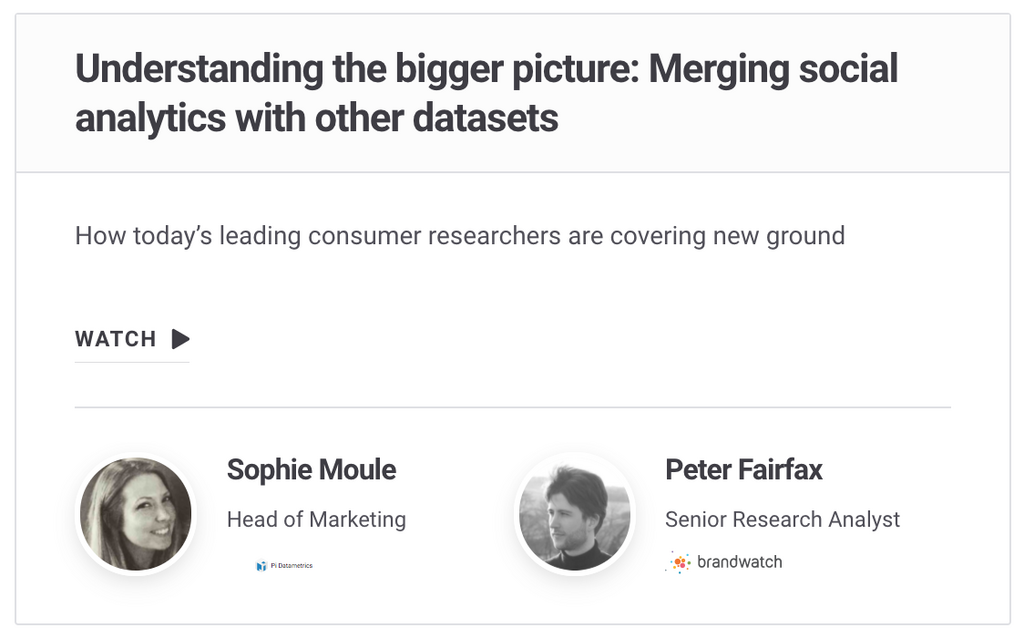Data can be both a blessing and a curse to companies — with more tools and sources than ever before, it’s easy to get lost in the data.
But with the right knowledge and tools, you can gain valuable insight into your customers to get them the right message in the right place at the right time.
Recently we published a report with our friends at Pi Datametrics, who love data just as much as we do. A catch up call with them often reveals multiple cool stories we want to share, and we can’t help but end up burrowing down various data-point rabbit holes!
The report focuses on personal debt, and how public online discussion around the topic compares to what internet users are actually searching for online. We tested the hypothesis that online conversations around debt are thematically different to online searches, and that debt discussion varies in high and low income areas.
Why is blending data so important?
Using different datasets together can answer questions that could not be answered by each dataset alone, and provides a more holistic picture of consumer behaviors and attitudes toward debt.
This data can be used to better identify opportunities to target customers at the right time, in the right place. In short – you get a richer view of the customer voice.
 Aamna Dabral, Social Media Analyst in Brandwatch’s Research Services team, gave us some of her time and expertise on how and which data sets to use for the most complete 360-degree view of customers. Having recently worked on projects that leveraged the power of unique blends of different sets, she had this to say.
Aamna Dabral, Social Media Analyst in Brandwatch’s Research Services team, gave us some of her time and expertise on how and which data sets to use for the most complete 360-degree view of customers. Having recently worked on projects that leveraged the power of unique blends of different sets, she had this to say.
While traditional research is a great way to pull insights in a planned and controlled manner, complementing this type of research with a more organic approach, such as with social data, helps researchers uncover insights and conversations they might have missed with a more planned approach. When augmenting a more traditional research plan, exploratory research with social can help develop the framework for traditional surveys/guides. For example, while looking at social conversation around a product, a researcher could find mentions around issues with a specific product feature such as interface, and then use traditional focus groups to get more specifics on the pain points around that product feature. Social can also be used after insights have been collected from traditional market research to further quantify/reiterate findings or to even get more nuanced and unprompted qualitative information to add more color, details, and specifics to the initial findings.
What have we learned through blending data?
Take this this example, for instance. We love this story (it was recently included in our guide 7 Mistakes Marketers Make and How to Avoid Them. Go have a read!)
Ben & Jerry’s blended social posts with weather data, and the results were pretty crazy. Ben & Jerry’s received 25% more clicks for the exact same cost as before acting on the analysis they uncovered.
How? I hear you cry.
The team collected a large selection of online posts suggesting the author wanted to buy ice cream. For example, “I’d love a #Ben&Jerry’s” or “desperate for a tub of cookie dough!”.
Next, they identified the location of the consumer. And finally, they compared volume of posts with weather data.
Blending these two data sets revealed a surprising correlation.
Of all the weather types, rain was most likely to encourage consumers to buy Ben & Jerry’s. The marketing team used this data to create location themed ads.
When it started raining, the online ad team dramatically increased the volume of advertisements. Through the optimization of their advertising, the brand received 25% more clicks – and I’ll say it again – for the exact same cost as before.
For marketers, the takeaways are clear.
Find localized advertising tactics that work and prioritize them ahead of personalized approaches – and blend, blend, blend!
We’ve got tons more where that came from…
In this on-demand webinar hear from Sophie Moule, Head of Marketing at Pi Datametrics, and Peter Fairfax, Senior Research Analyst at Brandwatch, discuss more surprising differences in what people say online vs. what they search for – and the new opportunities they’ve discovered by blending datasets.
 And check out the rest of our awesome Brandwatch webinars, available to watch at a time that suits you.
And check out the rest of our awesome Brandwatch webinars, available to watch at a time that suits you.
